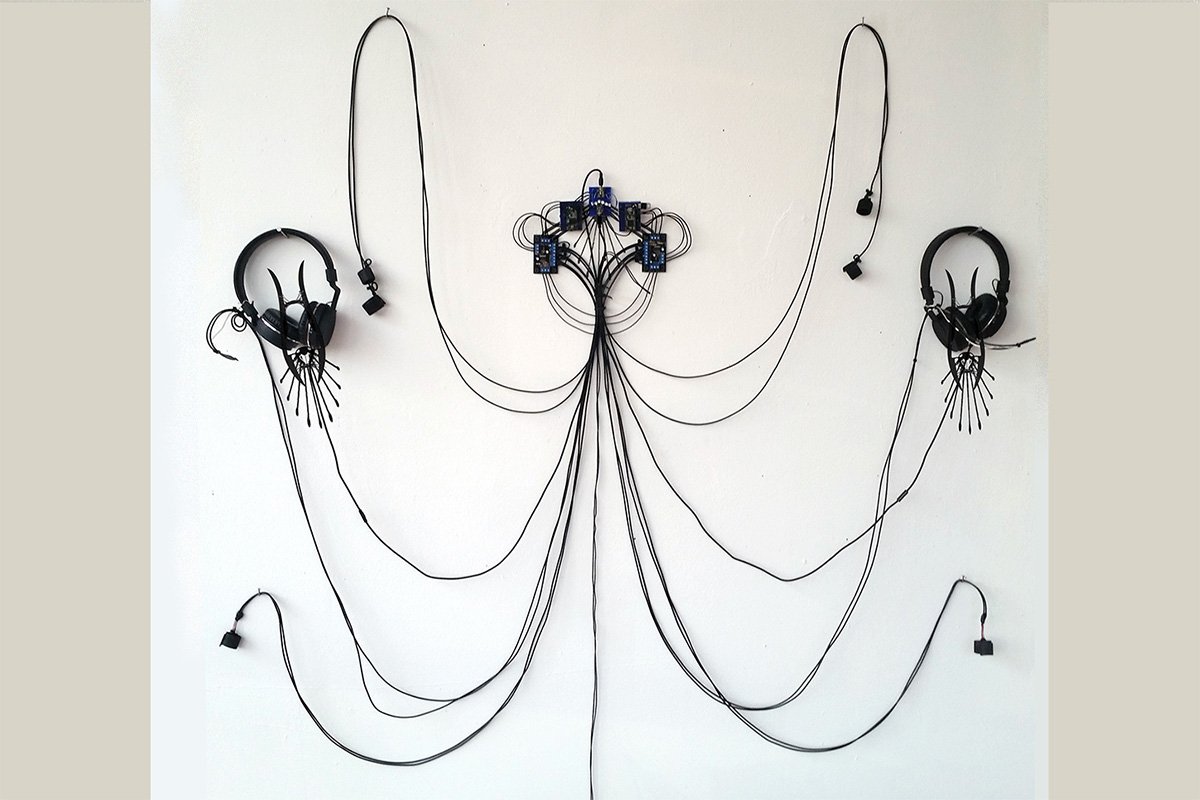Pinch and Soothe
Pinch and Soothe (2019)
Custom biofeedback instruments, microcontroller-based hardware, plexiglass.
2019
An interactive biofeedback sculpture for two: the sounds of the bodies are structured through this score for giving/receiving physical pain and healing.
Pinch the hand of the other three times.
Soothe the hand of the other three times.
Each action can be performed for a short duration or a long duration, lightly or with force, or intermixed. Listen to the sounds of your bodies, how they both shift and react to these interactions. The sounds of your body are in your left ear: the sounds of the other’s body are on the right.
Scoring biofeedback beyond the interface, instead scoring interaction, social experience, and relationships across the body.
The interface is purely hardware (bodies with limited memory) so no data is retained in the device. The biosensors consist of non-invasive heartrate, skin conductance and respiration sensors. These sensors can be exhibited alongside sterile pads if the public chooses to clean them before use.
Each body has its own tone associated with its heart, breath and respiration.
Respiration is mapped to a clear pitch that fades in and out with the breath through the hardware synthesizer.
Heartbeats are heard as low pulses.
Skin conductance is a high, ethereal tone. Because skin conductance is a value that is not normally perceived or well understood, think of it like a volume knob for emotion, whether positive or negative, accidental or unconscious. It is particularly active during emotions of delight or curiosity, however it tends to spike and fall in moments of non-specific emotion, like a beacon for change.
Sounds are emitted directly into the headphones. The only auditory witnesses are the performers themselves.
The device itself is totally plug and play. The hardware is intentionally fragile, with non-soldered wires visible – the circuitry is wired in such a way that the power sources are connected, co-dependent: if one half of the circuitry fails, the other will as well.
Please note that documentation of this work was partially obtained through social media, as the pandemic made the possible window for capturing human interaction with the work limited.
Credits
PCB designed by Martin Peach.
Exhibition history
To the Sooe. MacKenzie Art Gallery (Regina, Canada) January 2020 – April 2020 (closed early due to the pandemic)
Cluster Festival. (Winnipeg, Canada) March 2019.
Algorithms that Matter. Lydgalleriet (Bergen, Norway). February 2019.


